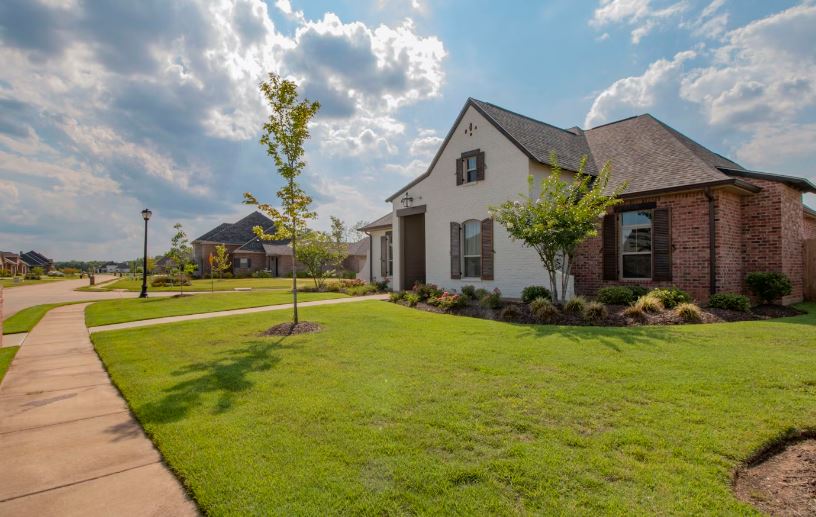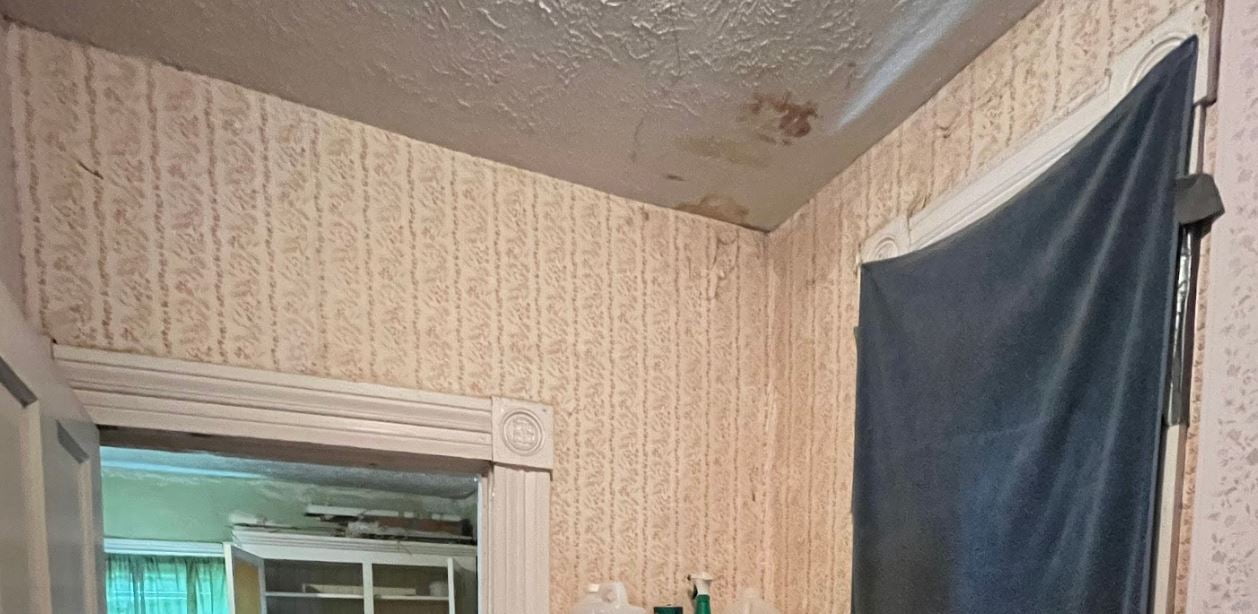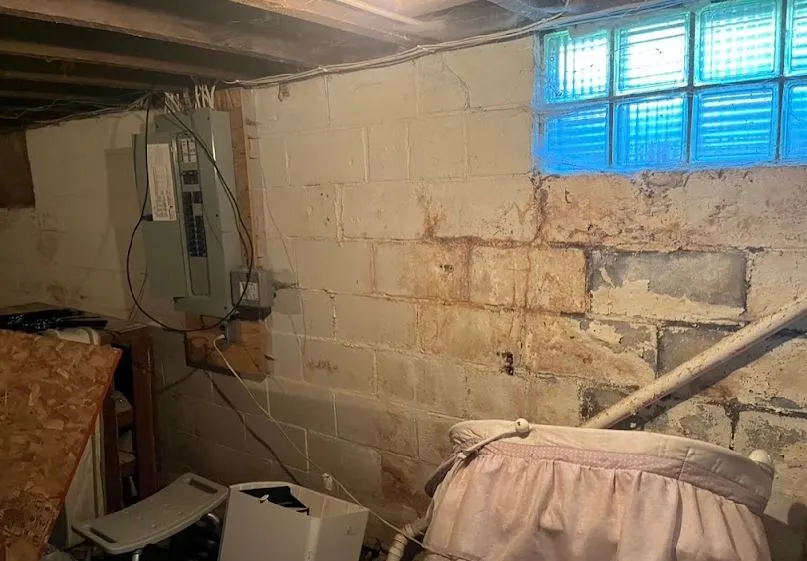Inheriting a house can be bittersweet, especially if it's fallen into disrepair.
Beyond the emotional weight, you might be worried about hidden problems lurking beneath the surface. One major concern - structural damage.
This kind of damage is pretty serious and super expensive to fix.
In this post, I'll take a closer look at some of the most common types of structural damage in distressed houses.
Signs Of Structural Damage To House
Here are some of the tell-tale signs of structural damage to a house:
#1 Sagging Roofs
Sagging roofs often indicate issues with the roof structure itself.
If rafters or roof decking materials become weak, rotted, or damaged, they can begin to sag under the weight they are meant to support.

Sagging is often first noticeable in the roof line or fascia boards.
You’ll also see visible cracks or holes on the interior ceiling as the roof support system fails.
Also Read: Selling Abandoned Property
#2 Timber Rot
The wooden structural elements in a home can decay or rot away over time too.
Signs of timber rot include:
- Soft, spongy spots on wood
- Peeling paint
- Dark streaking
- Warped wood
- New cracks
- Musty smell
Rotting timber loses strength and integrity, becoming unable to safely bear structural loads.
This can lead to destabilized walls, sagging floors, collapsed porches, and roof damage.
#3 Crumbling Concrete
The concrete can develop cracks, spalls, erodes and decays over time when it is exposed to weather, wear and ground movement.
You can tell it's falling apart if you see cracks, holes, bits breaking off, the metal bars inside showing, or rocks coming loose.
If it fails, it won’t be able to support the structures above like columns, beams, and floors.
And if you don't do something about it, the damage just keeps spreading, and things like foundations, floors, and walls could collapse.
You'll have to hire a concrete contractor to take a look at it and see what can be done.
#4 Wall And Ceiling Cracks
Another sign of structural issues is wall and ceiling cracks.
If you spot cracks in your walls or ceilings, especially if they're big, getting bigger, or following a pattern, it could mean there's something serious going on like the foundation moving or water messing things up, and you should check it out more closely.
It's normal for a house to develop some small cracks as it settles, but if they're getting wider and spreading out, that's a sign that there might be a bigger issue underneath.
#5 Warped Ceilings
Warped ceilings are also a sign.
If your ceiling is all wonky, drooping, or tilting to one side, it's a sign that there's something wrong upstairs—literally.
It could be a messed-up roof, issues with the beams holding everything together, or water seeping in and causing the wood to rot and warp.
And if your ceiling just started warping, it means the parts holding it up are bending out of shape.
#6 Sticking Doors And Windows
Doors and windows that suddenly become difficult to open or close can mean a house has settled unevenly, placing walls and frames out of plumb.
Also Read: Physical distress in homes
When the foundation sinks or moves, it messes with how walls hold up weight, making them bend and twist.
If doors and windows start sticking gradually, it could mean the house is still settling.
#7 Cracks In Foundations
Cracks in a house's foundation can indicate structural issues too.
Long, wide cracks in the concrete or block foundation, especially diagonal cracks, often mean the foundation is settling unevenly.
Cracks that get progressively wider over time suggest ongoing movement and instability in the foundation that requires repair to prevent further damage.
Also Read: Selling a house with foundation issues
#8 Uneven Floors
Floors that are uneven or slope noticeably can be a sign of foundation problems.
If sections of floor feel higher or lower than surrounding areas, it likely means the foundation is shifting and sinking below that part of the house.
This can put stress on structural elements and can cause cracks in walls and ceilings as well.
#9 Gaps Between Walls
Gaps appearing between walls or between walls and ceilings are also a sign.

As a house's foundation settles, the structure can pull apart where walls meet.
Widening gaps is usually a big red flag for serious problems with the foundation or the supports holding everything together.
If you don't do something about it, those gaps will just keep getting bigger, letting in water, pests, and making the structural damage even worse.
Can Structural Damage To House Be Fixed?
The good news is that in many cases, these structural issues can be fixed.
But it really depends on what's causing the problem and how extensive the damage is.
It's also super important that the repairs are done right - shoddy workmanship can just make things worse in the long run.
You must get a professional in there to take a close look and give you the full scoop.
They can check the damage, figure out what's causing it, and tell if it's something that can be repaired or if it's too far gone. Don’t let it linger as it can lead to even more trouble down the line.
Now you don’t have to always fix these issues. You can sell your house as-is too!
Also Read: Should I Repair Distressed Homes
Cash buyers like us are willing to purchase properties with structural damage. Plus, we can close super fast and cover all the fees!
Fixing Structural Damage To House
Repairing structural damage usually involves a combination of reinforcement, and restoration.
Some of the most common repairs are:
- Underpinning to strengthen the foundation
- Wall tie replacement to reconnect separated masonry walls
- Crack stitching or repointing to restore the structural integrity of brickwork or stone walls
In some cases, major structural components, such as beams or joists, may need to be replaced or reinforced.
Note: Structural repairs can be super expensive, and the costs can quickly add up, especially if the damage is severe or widespread.
So be prepared to factor in these repair costs.
Bottom Line
These are some of the most common signs of structural problems in distressed homes.
If you notice any of these in your property, you would definitely have to get them fixed if you are going to list on the open market.
Otherwise you won’t get a lot of offers and will take a long time to find a buyer.
Plus, they probably won’t offer a lot either.
So fix these up! Many of them can be repaired, but the success and cost depend on the extent of the damage.
FAQs
What Is Considered Structural Damage To A House?
Structural damage refers to any damage or defect that compromises the structural integrity of a building, including its foundation, framing, and load-bearing components.
This can include cracks in walls or foundations, sagging floors or ceilings, and damage caused by water, termites, or other factors.
Structural Damage Repair Cost
Structural damage repair can cost anywhere between $5,000 and $20,000 or even higher depending on the severity. The exact cost depends on the extent and type of damage, as well as the location and size of the property.
For example, minor repairs like fixing small cracks would only cost a few thousand dollars.

